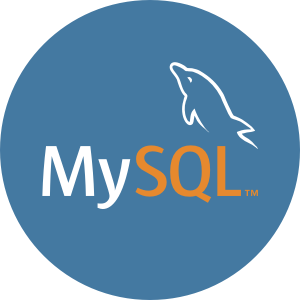Kdb vs MySQL
A detailed comparison
Compare Kdb and MySQL for time series and OLAP workloads
Learn About Time Series DatabasesChoosing the right database is a critical choice when building any software application. All databases have different strengths and weaknesses when it comes to performance, so deciding which database has the most benefits and the most minor downsides for your specific use case and data model is an important decision. Below you will find an overview of the key concepts, architecture, features, use cases, and pricing models of Kdb and MySQL so you can quickly see how they compare against each other.
The primary purpose of this article is to compare how Kdb and MySQL perform for workloads involving time series data, not for all possible use cases. Time series data typically presents a unique challenge in terms of database performance. This is due to the high volume of data being written and the query patterns to access that data. This article doesn’t intend to make the case for which database is better; it simply provides an overview of each database so you can make an informed decision.
Kdb vs MySQL Breakdown
 |
 |
|
| Database Model | Time series and columnar database |
Relational database |
| Architecture | Kdb can be deployed on-premises, in the cloud, or as a hybrid solution. |
MySQL uses a client-server model with a multi-layered server design. It supports the SQL query language and offers various storage engines, such as InnoDB and MyISAM, for different use cases. MySQL can be deployed on-premises, in the cloud, or as a managed service. |
| License | Closed source |
GNU General Public License v2 (for the open-source Community Edition) |
| Use Cases | High-frequency trading, financial services, market data analysis, IoT, real-time analytics |
Web applications, e-commerce, data warehousing, content management systems, business applications |
| Scalability | Highly scalable with multi-threading and multi-node support, suitable for large-scale data processing |
Supports vertical scaling by adding more resources to a single node; horizontal scaling can be achieved through replication, sharding, and third-party tools |
Looking for the most efficient way to get started?
Whether you are looking for cost savings, lower management overhead, or open source, InfluxDB can help.
Kdb Overview
kdb+ is a high-performance columnar, time series database developed by Kx Systems. Released in 2003, kdb+ is designed to efficiently manage large volumes of data, with a primary focus on financial data, such as stock market trades and quotes. It is built on the principles of the q programming language, which is a descendant of APL and K. The database is known for its speed, scalability, and ability to process both real-time and historical data.
MySQL Overview
MySQL is an open source relational database management system that was first released in 1995. It is one of the most popular databases worldwide due to its ease of use, reliability, and performance. MySQL is widely used for web applications, online transaction processing, and data warehousing. Oracle Corporation acquired MySQL in 2010, but it remains open source software with an active community of contributors.
Kdb for Time Series Data
kdb+ is designed to store time series data, making it a natural fit for applications that require high-speed querying and analysis of large volumes of data. Its columnar storage format allows for efficient compression and retrieval of time series data, while its q language provides a powerful and expressive means to manipulate and analyze the data. kdb+ is especially strong for financial data, though it can be used for other types of time series data as well.
MySQL for Time Series Data
MySQL can be used for storing and analyzing time series data, but it will not be as efficient as a dedicated time series databases. MySQL’s flexibility and support for various indexing techniques can make it a suitable choice for small to medium sized time series datasets. For large-scale time series data workloads, with high write throughput or use cases where low latency queries are required, MySQL will tend to struggle unless highly customized.
Kdb Key Concepts
- q language: A high-level, domain-specific programming language used for querying and manipulating data in kdb+. It combines SQL-like syntax with a functional programming style.
- Columnar storage: kdb+ stores data in columns, rather than rows, which allows for faster querying and analysis of time series data.
- Tables: kdb+ stores data in tables, which are similar to relational tables, but with a focus on columnar storage and time series data.
- Splayed tables: A table storage format where each column is stored in a separate file, further enhancing query performance.
MySQL Key Concepts
- Table: A collection of related data organized in rows and columns, which is the primary structure for storing data in MySQL.
- Primary Key: A unique identifier for each row in a table, used to enforce data integrity and enable efficient querying.
- Foreign Key: A column or set of columns in a table that refers to the primary key in another table, used to establish relationships between tables.
Kdb Architecture
kdb+ is a columnar, time series database that employs a custom data model tailored for efficient storage and querying of time series data. It does not use traditional SQL, but instead relies on the q language for querying and data manipulation. The architecture of kdb+ is designed for both in-memory and on-disk storage, with the ability to scale horizontally across multiple machines. The primary components of kdb+ are the database engine, the q language interpreter, and the built-in web server.
MySQL Architecture
MySQL is a relational database management system that uses SQL for defining and manipulating data. It follows the client-server model, where a MySQL server accepts connections from multiple clients and processes their queries. MySQL’s architecture includes a storage engine framework that allows users to choose from different storage engines, such as InnoDB, MyISAM, or Memory, to optimize the database for specific use cases.
Free Time-Series Database Guide
Get a comprehensive review of alternatives and critical requirements for selecting yours.
Kdb Features
High performance
kdb+ is known for its speed and performance, with its columnar storage format and q language allowing for rapid querying and analysis of time series data.
Scalability
kdb+ is designed to scale horizontally, making it suitable for handling large volumes of data across multiple machines.
q language
The q language is a powerful, expressive, and high-level language used for querying and manipulating data in kdb+. It combines SQL-like syntax with a functional programming style.
MySQL Features
ACID compliance
MySQL supports transactions and adheres to the ACID (Atomicity, Consistency, Isolation, Durability) properties, ensuring data integrity and consistency.
Scalability
MySQL can scale both vertically and horizontally, depending on the storage engine and configuration.
Replication and high availability
MySQL supports various replication techniques, including master-slave and master-master replication, to provide high availability and fault tolerance.
Kdb Use Cases
Financial data analysis
kdb+ is widely used in the financial industry for the storage and analysis of stock market trades, quotes, and other time series financial data.
High-frequency trading
kdb+ is a popular choice for high-frequency trading applications due to its high performance and ability to handle large volumes of real-time data.
IoT and sensor data
kdb+ can be used to store and analyze large volumes of time series data generated by IoT devices and sensors, though its primary focus remains on financial data.
MySQL Use Cases
Web applications
MySQL is a popular choice for powering web applications, content management systems, and e-commerce platforms due to its flexibility, ease of use, and performance.
Online transaction processing (OLTP)
MySQL is suitable for OLTP systems that require high concurrency, fast response times, and support for transactions.
Data warehousing
While not specifically designed for data warehousing, MySQL can be used for small to medium-sized data warehouses, leveraging its support for indexing, partitioning, and other optimization techniques.
Kdb Pricing Model
kdb+ is a commercial product, with pricing depending on the deployment model and the number of cores or servers used. Kx Systems offers a free 32-bit version of kdb+ for non-commercial use, with limitations on the amount of memory that can be used. For commercial deployments and full-featured versions, users must contact Kx Systems for pricing details.
MySQL Pricing Model
MySQL is available in multiple editions with different feature sets and pricing models. The MySQL Community Edition is open source and free to use, while the MySQL Enterprise Edition includes additional features, such as advanced security, monitoring, and management tools, and requires a subscription. Pricing for the Enterprise Edition depends on the number of server instances and the level of support required.
Get started with InfluxDB for free
InfluxDB Cloud is the fastest way to start storing and analyzing your time series data.
